Pie Charts and Bar Charts Worksheets
Drawing Tally Charts
Grades: 1st Grade
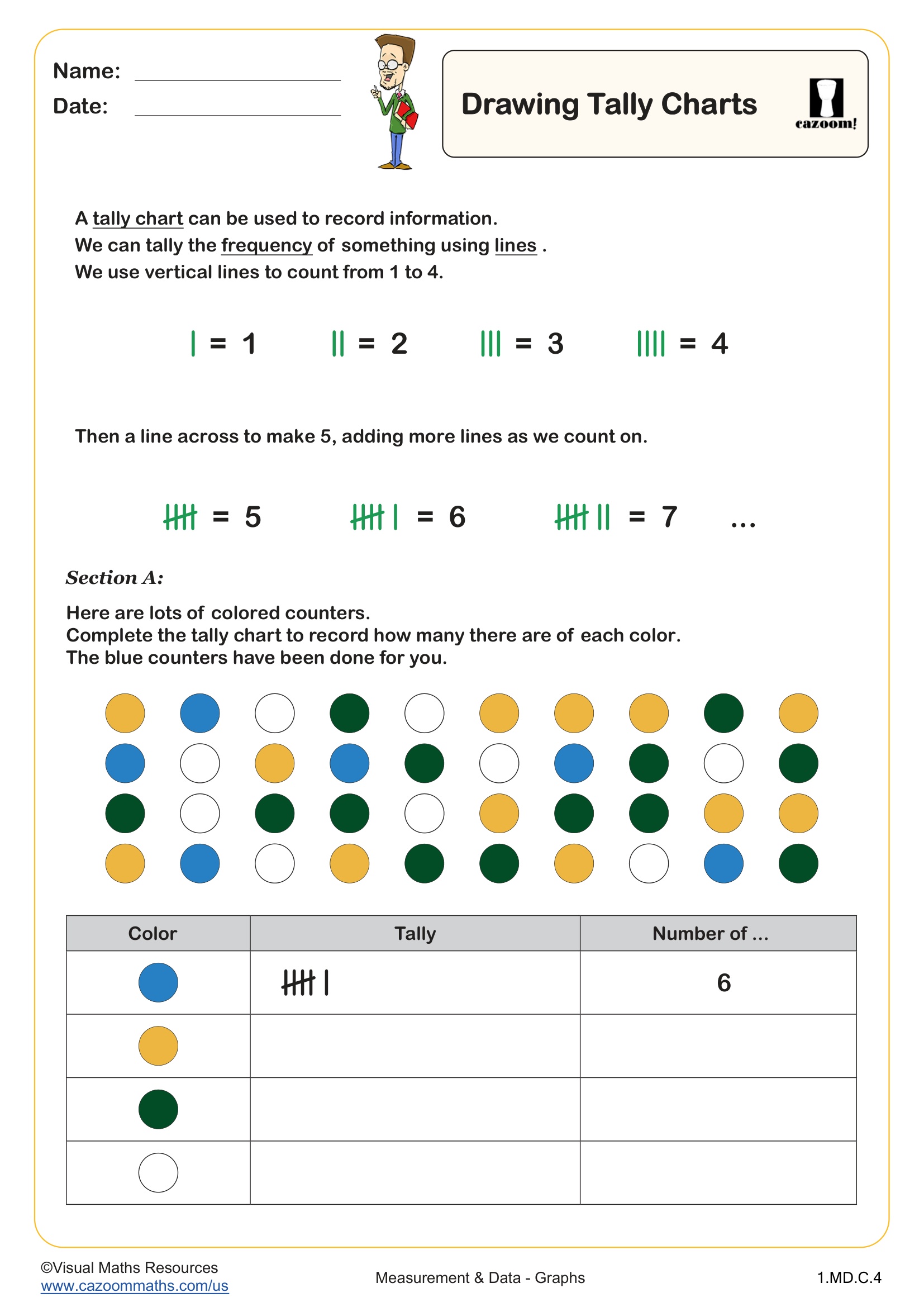
Reading Tally Charts
Grades: 1st Grade
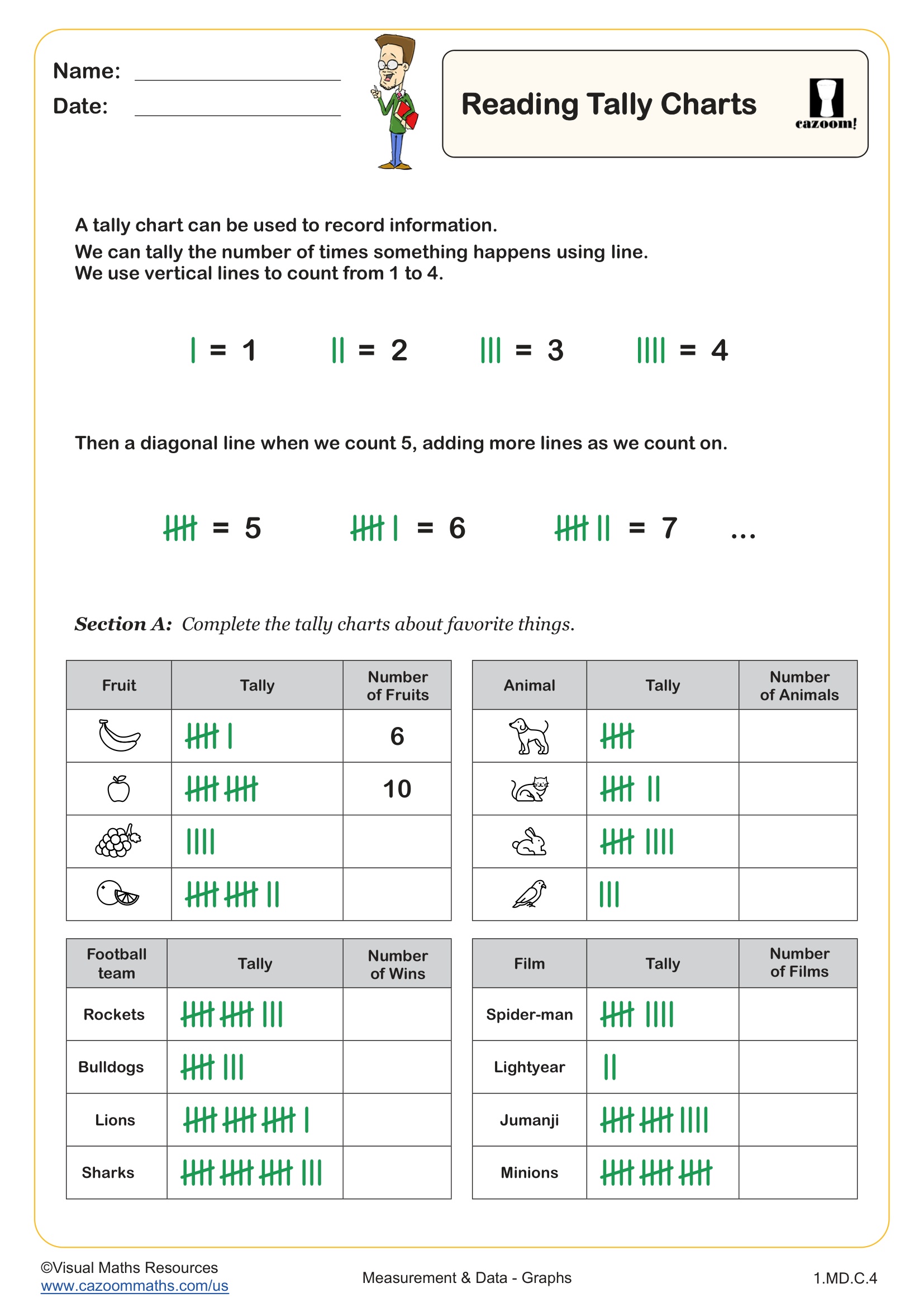
Bar Graphs
Grades: 2nd Grade, 3rd Grade
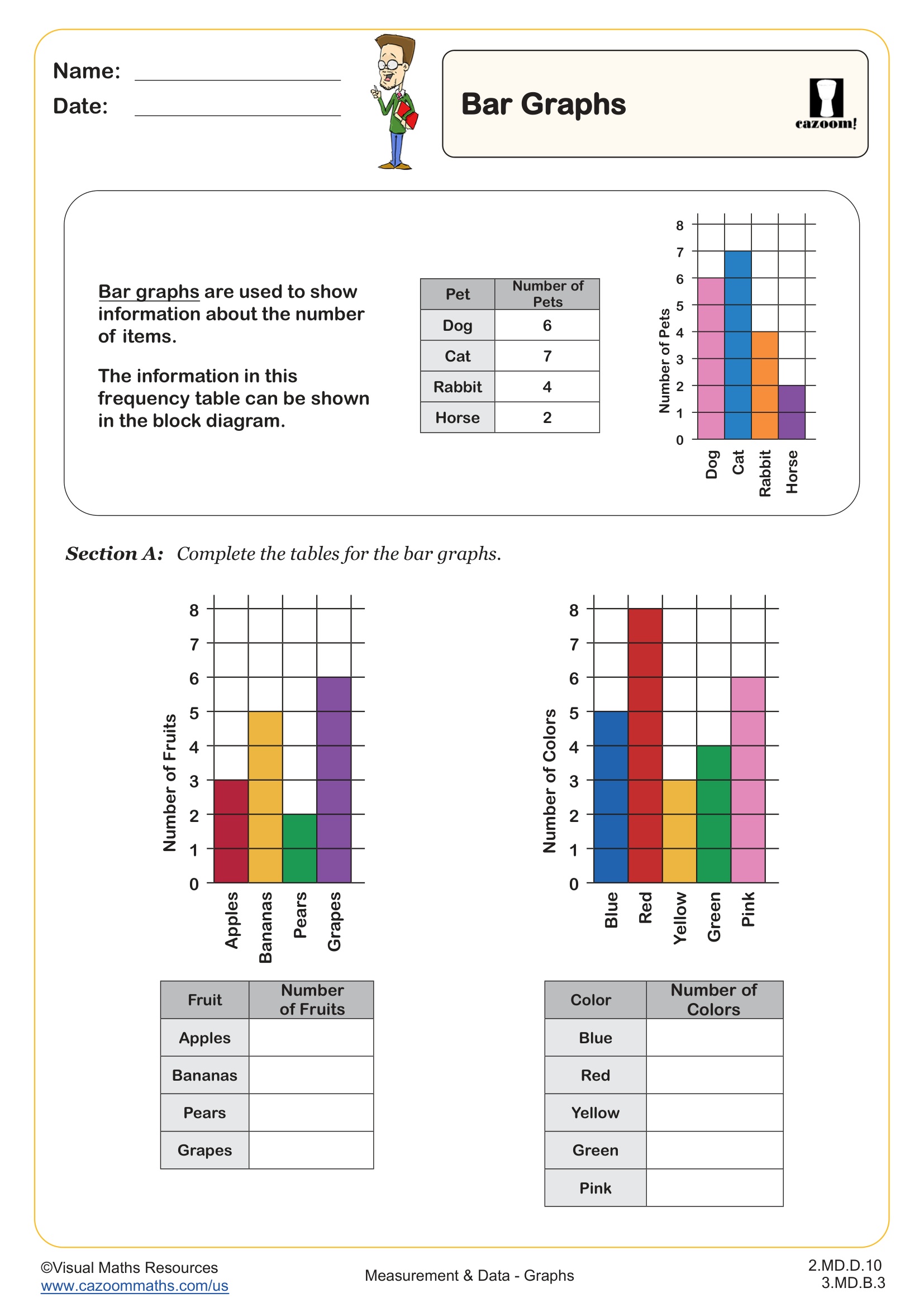
Block Diagrams (B)
Grades: 2nd Grade, 3rd Grade
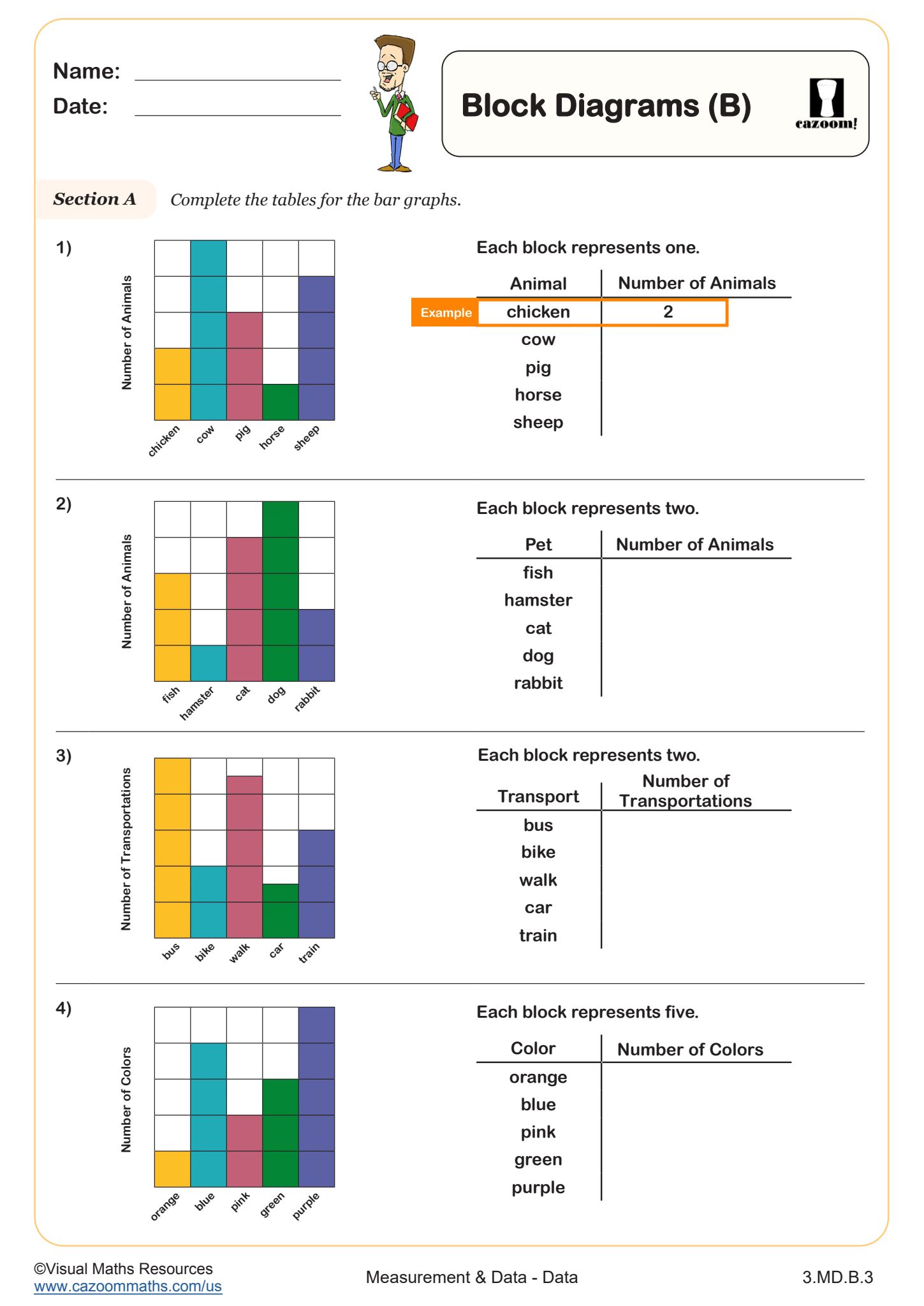
Drawing Pictographs
Grades: 2nd Grade
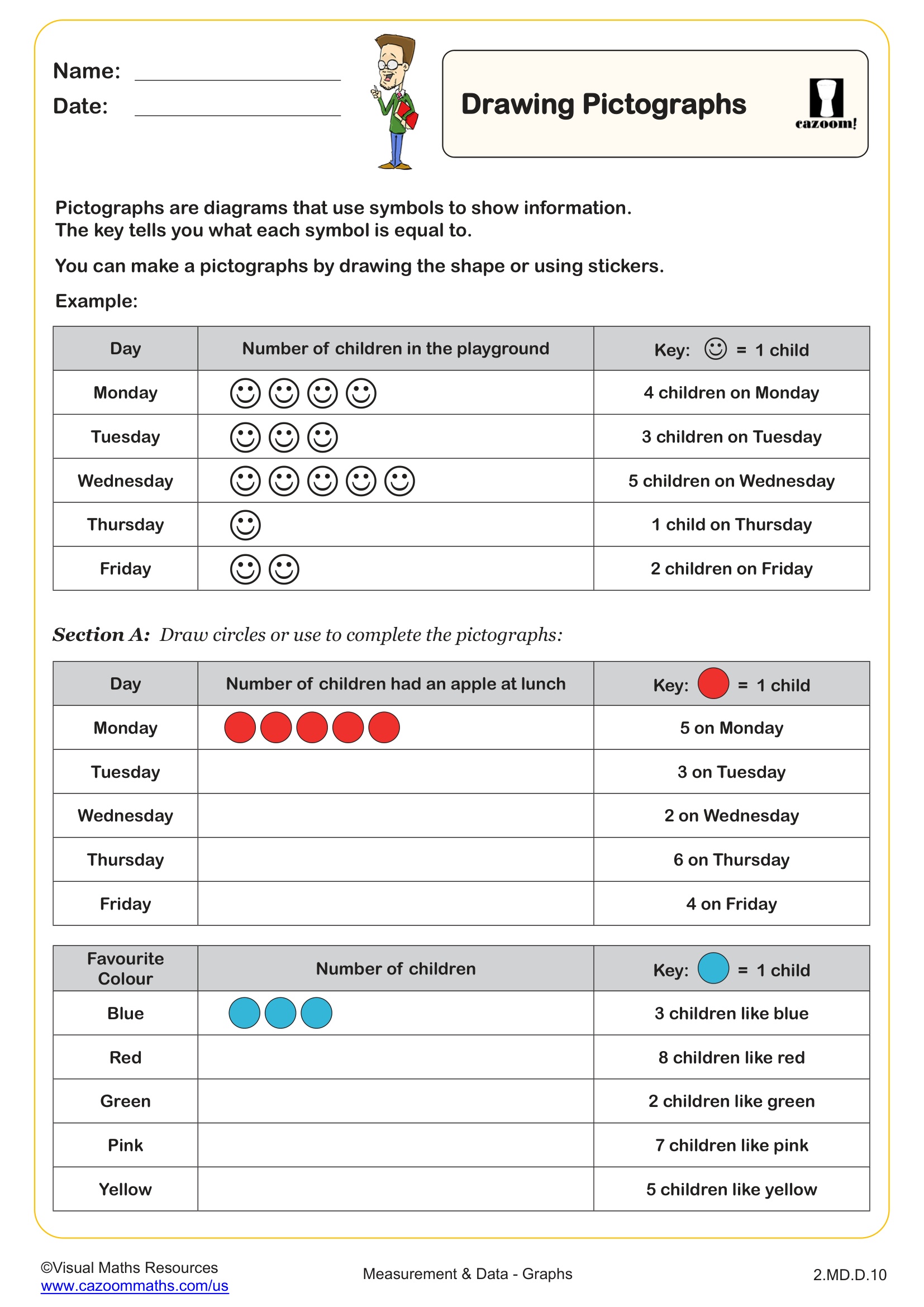
Reading Pictographs
Grades: 2nd Grade
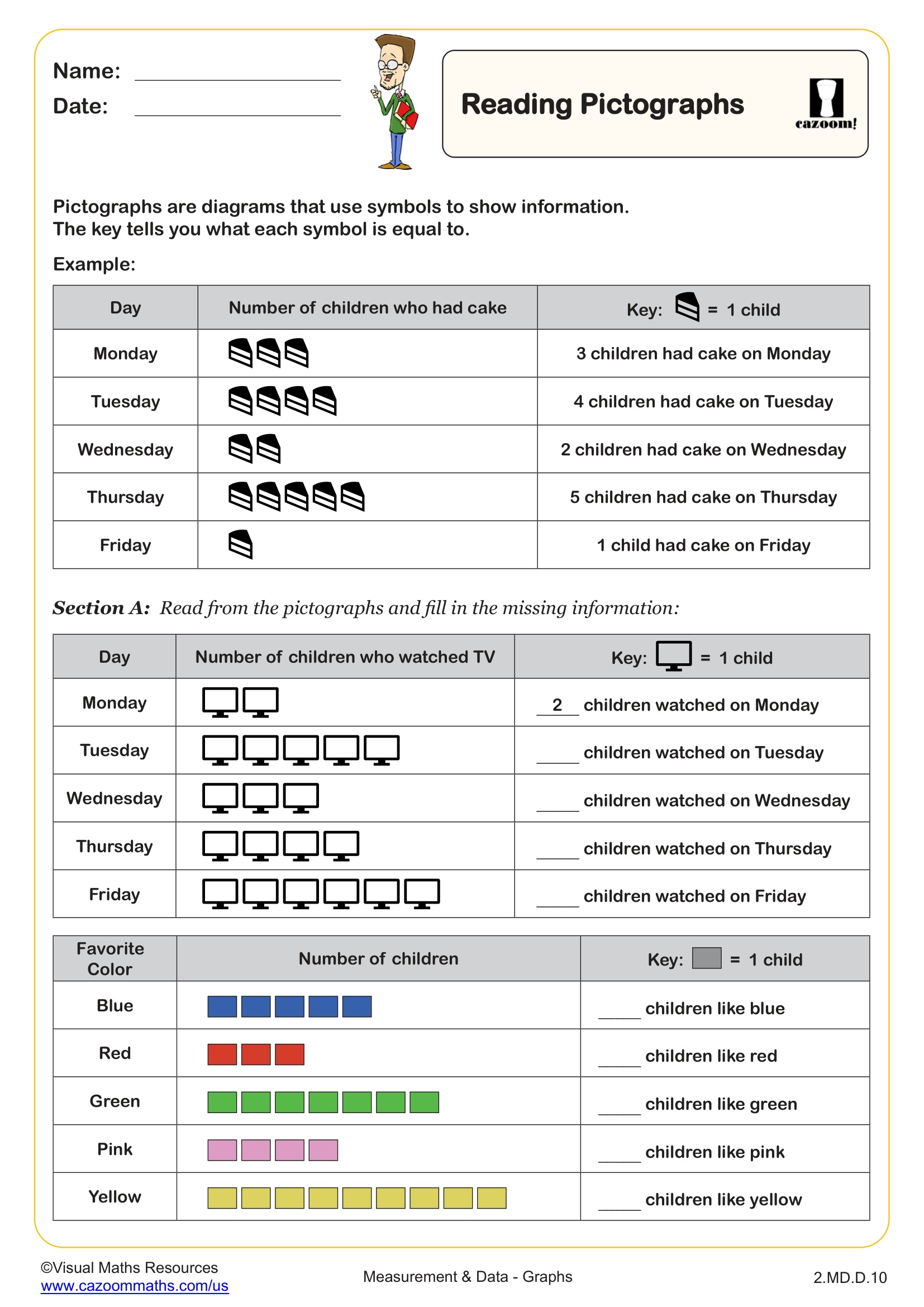
Reading from Time Tables
Grades: 3rd Grade, 4th Grade

Completing Tables from Pie Charts
Grades: 6th Grade
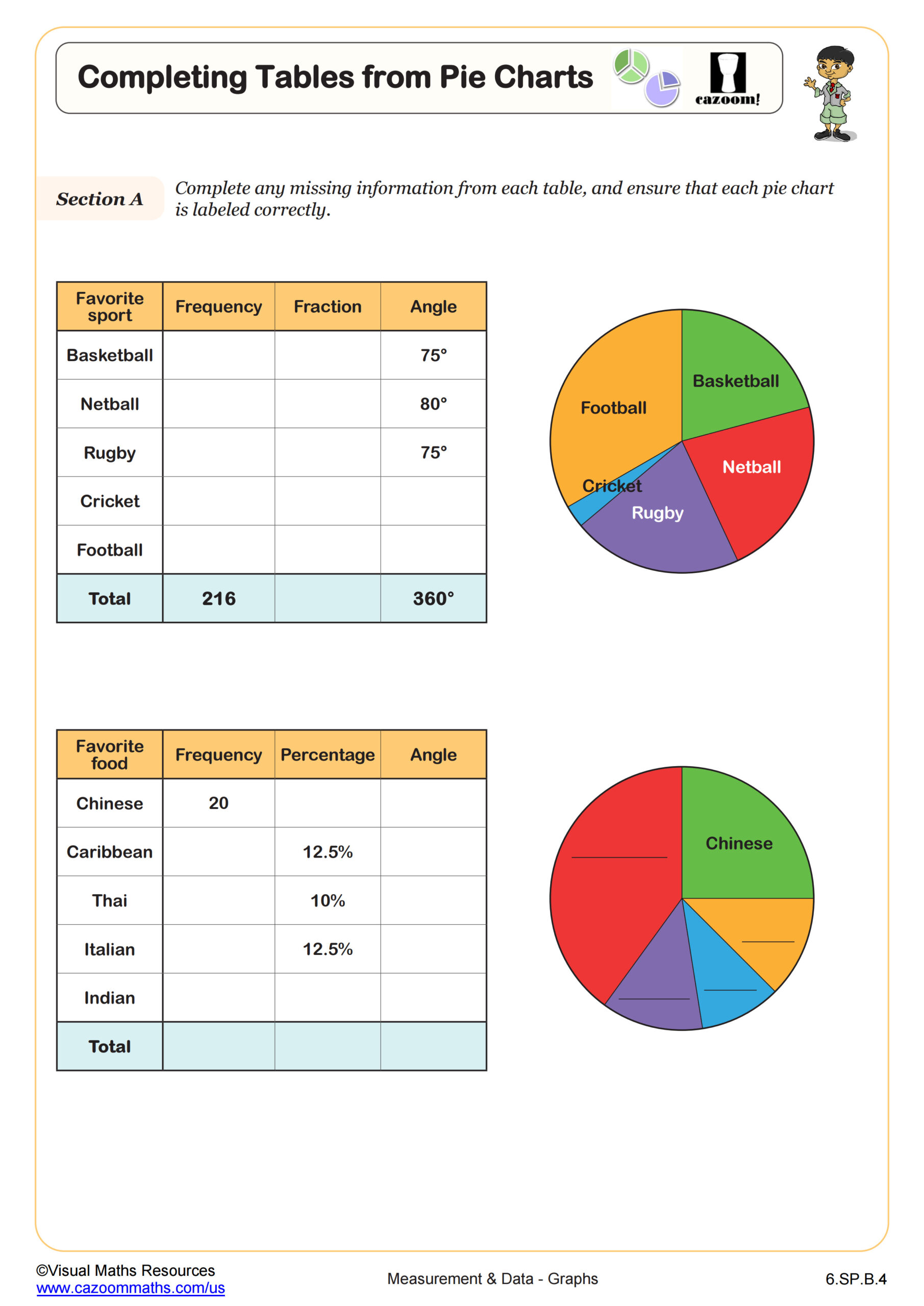
Drawing Bar Graphs from Frequency Tables (A)
Grades: 6th Grade
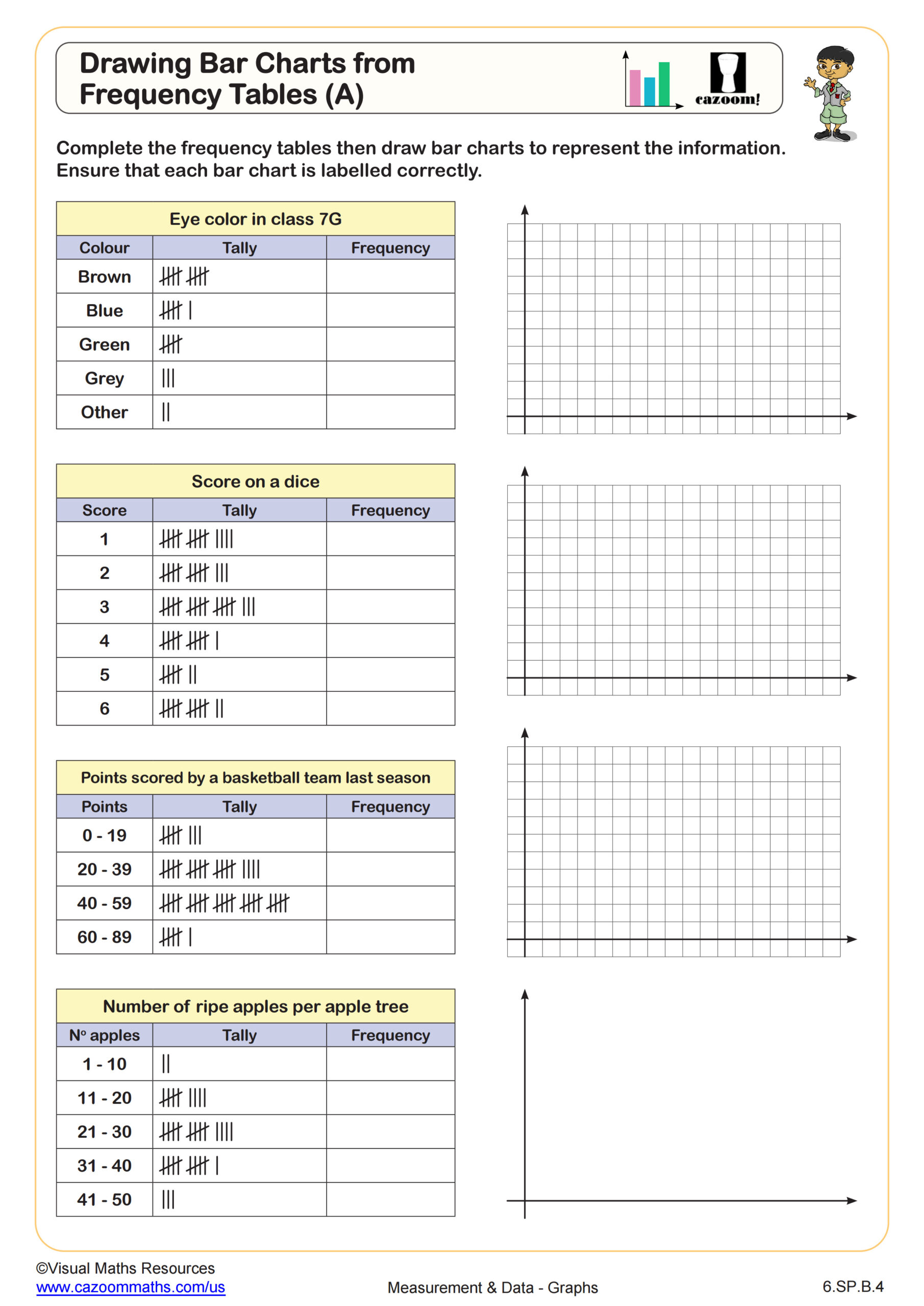
Drawing Bar Graphs from Frequency Tables (B)
Grades: 6th Grade
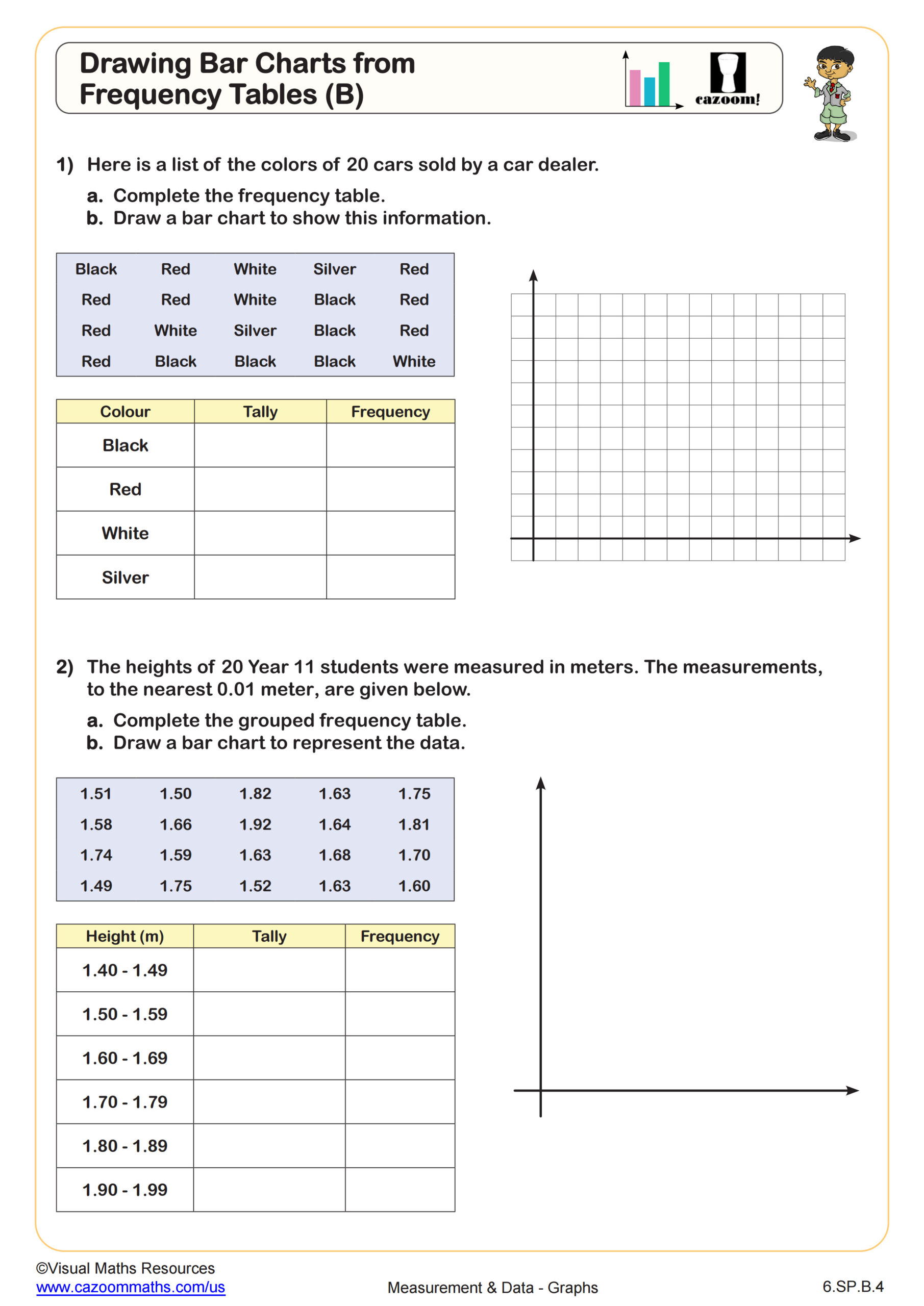
Drawing Pie Charts (A)
Grades: 6th Grade
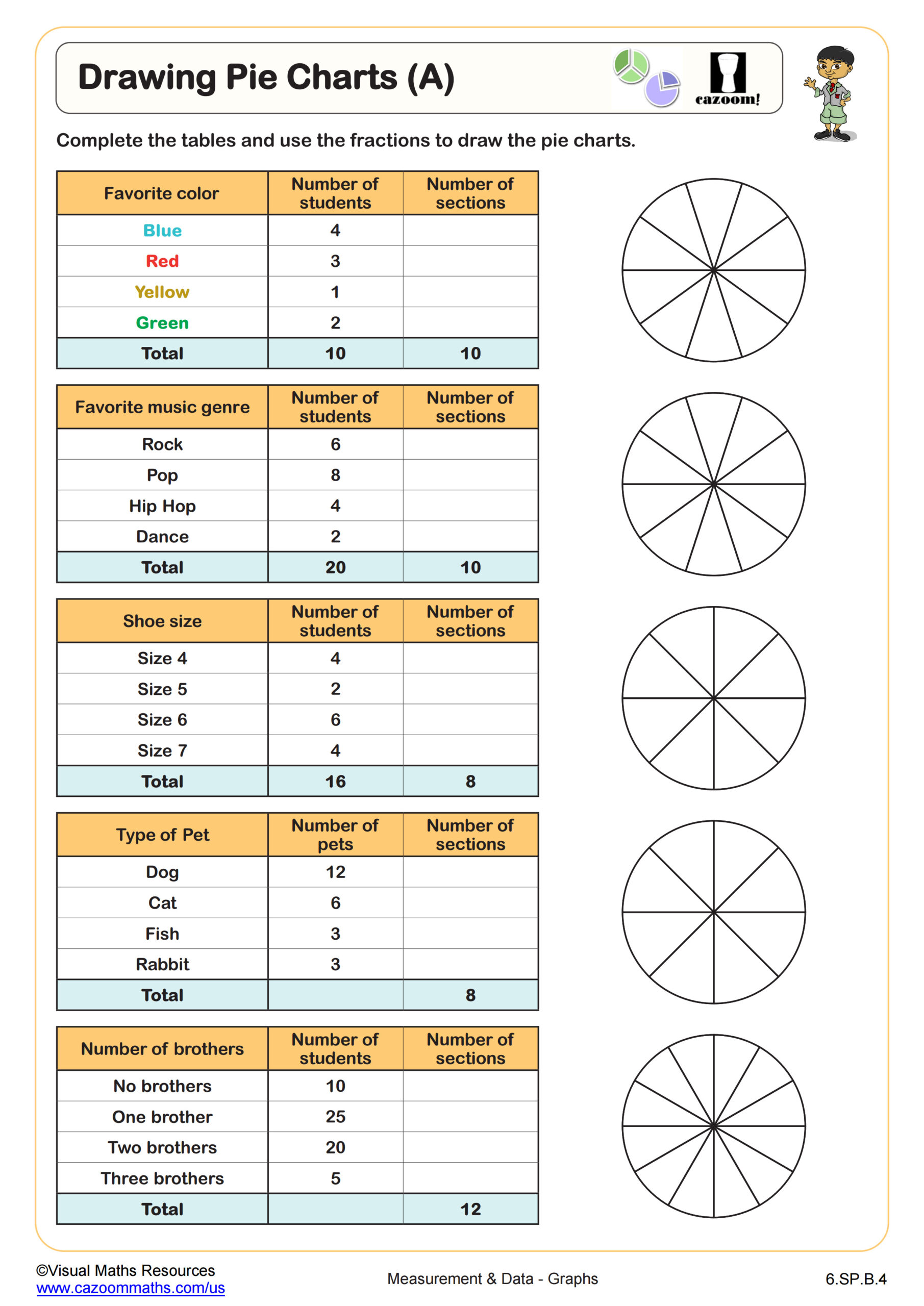
Drawing Pie Charts (B)
Grades: 6th Grade
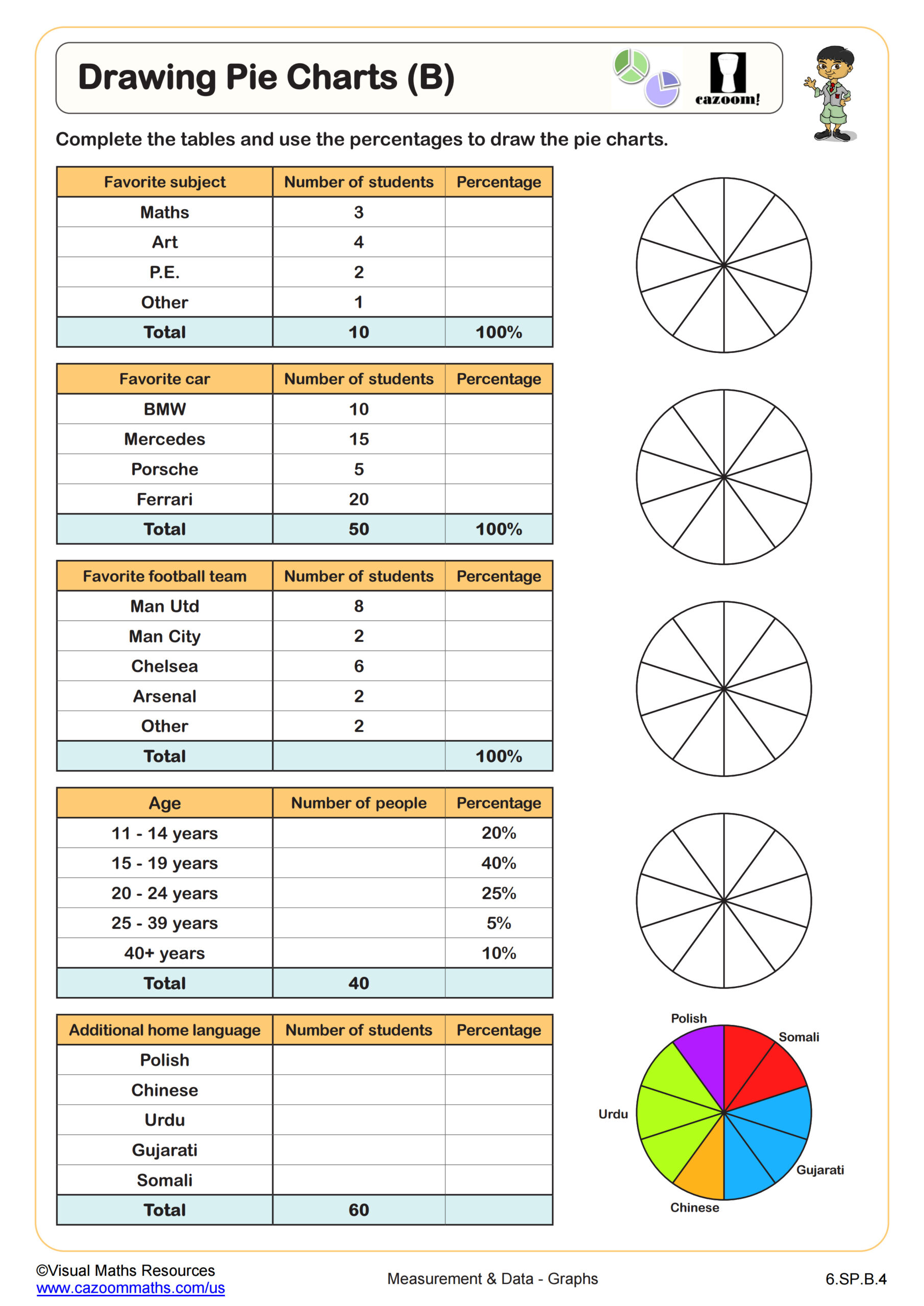
Drawing Pie Charts (C)
Grades: 6th Grade
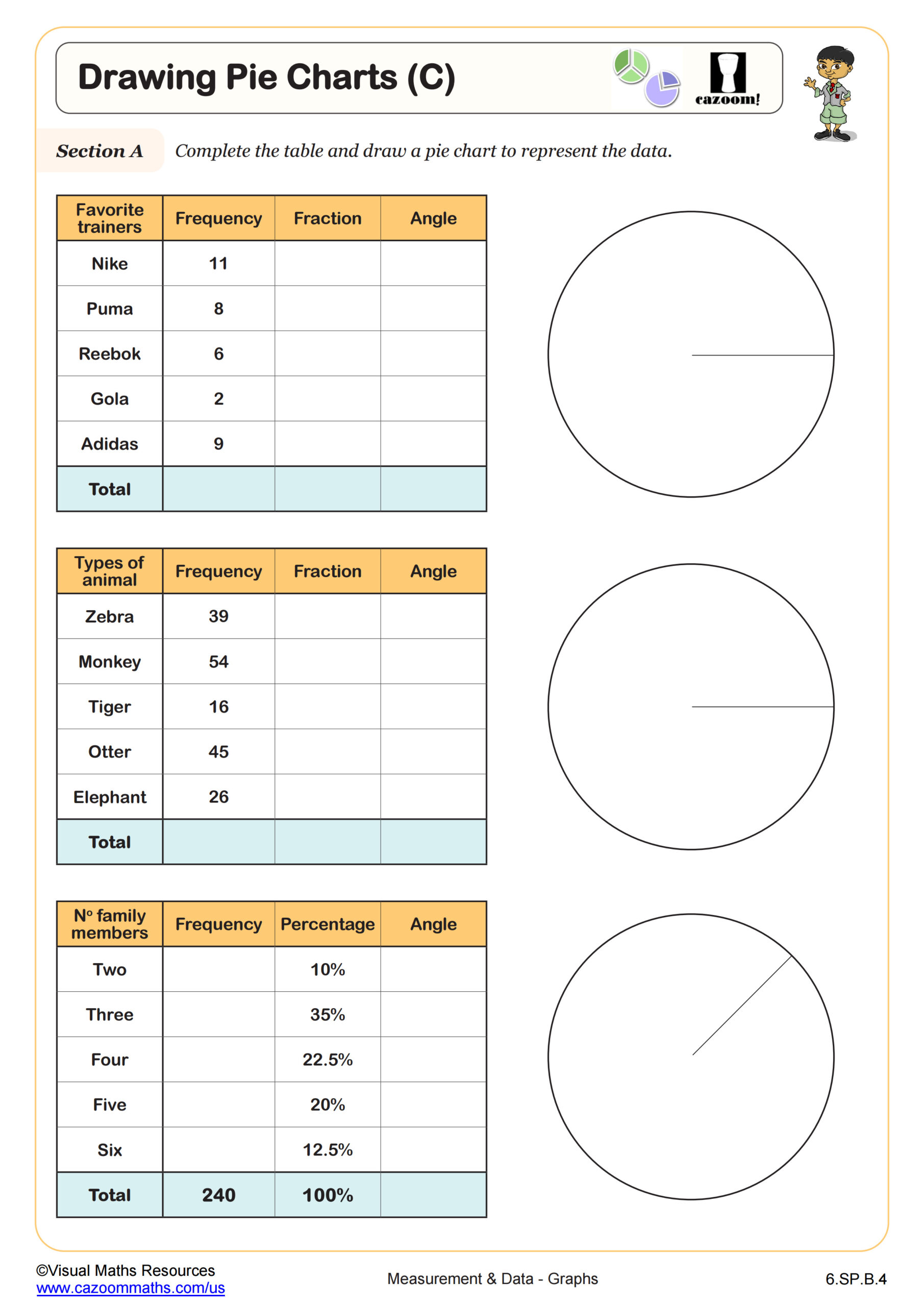
Reading Bar Graphs
Grades: 6th Grade
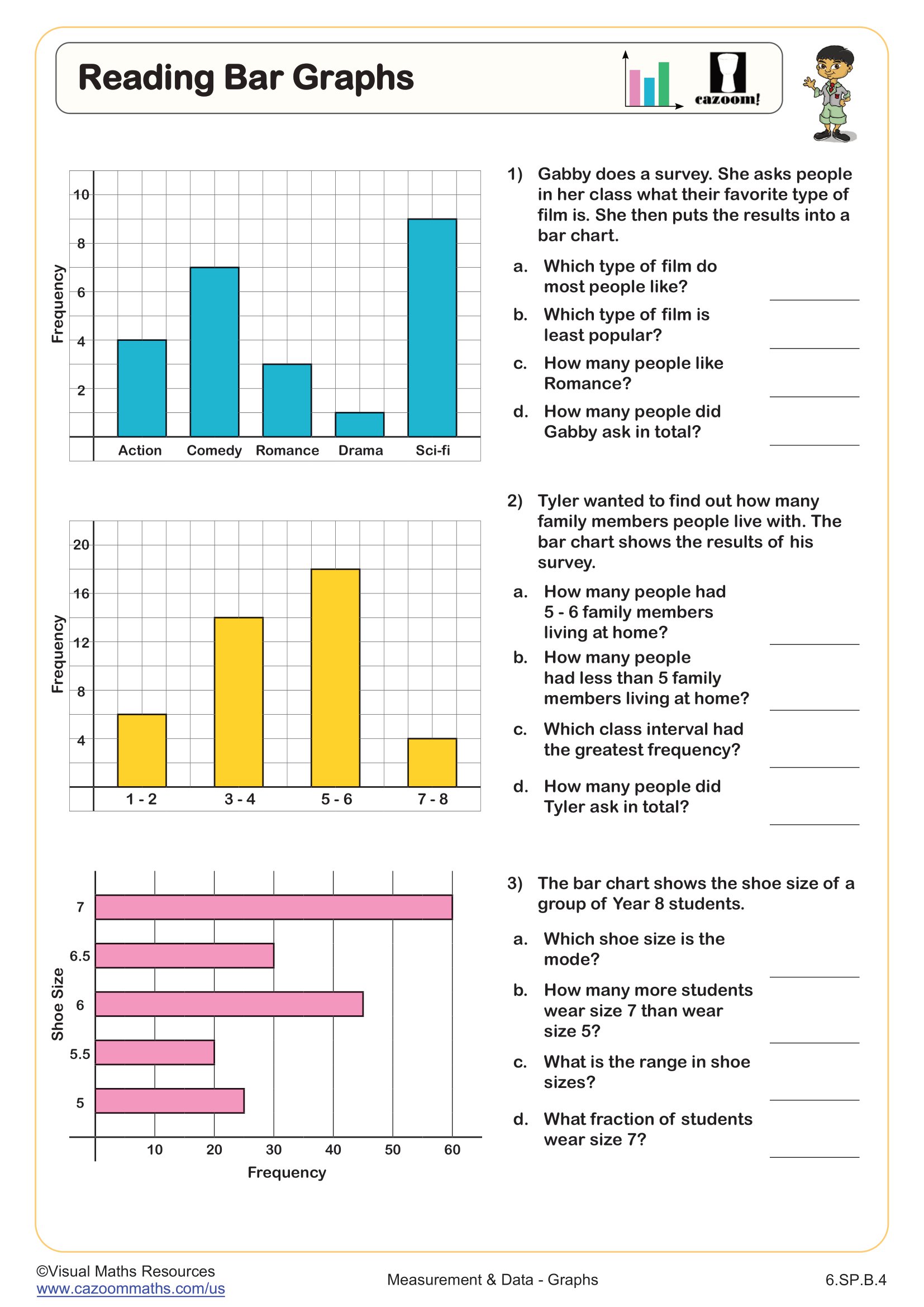
Reading Compound Bar Graphs
Grades: 6th Grade
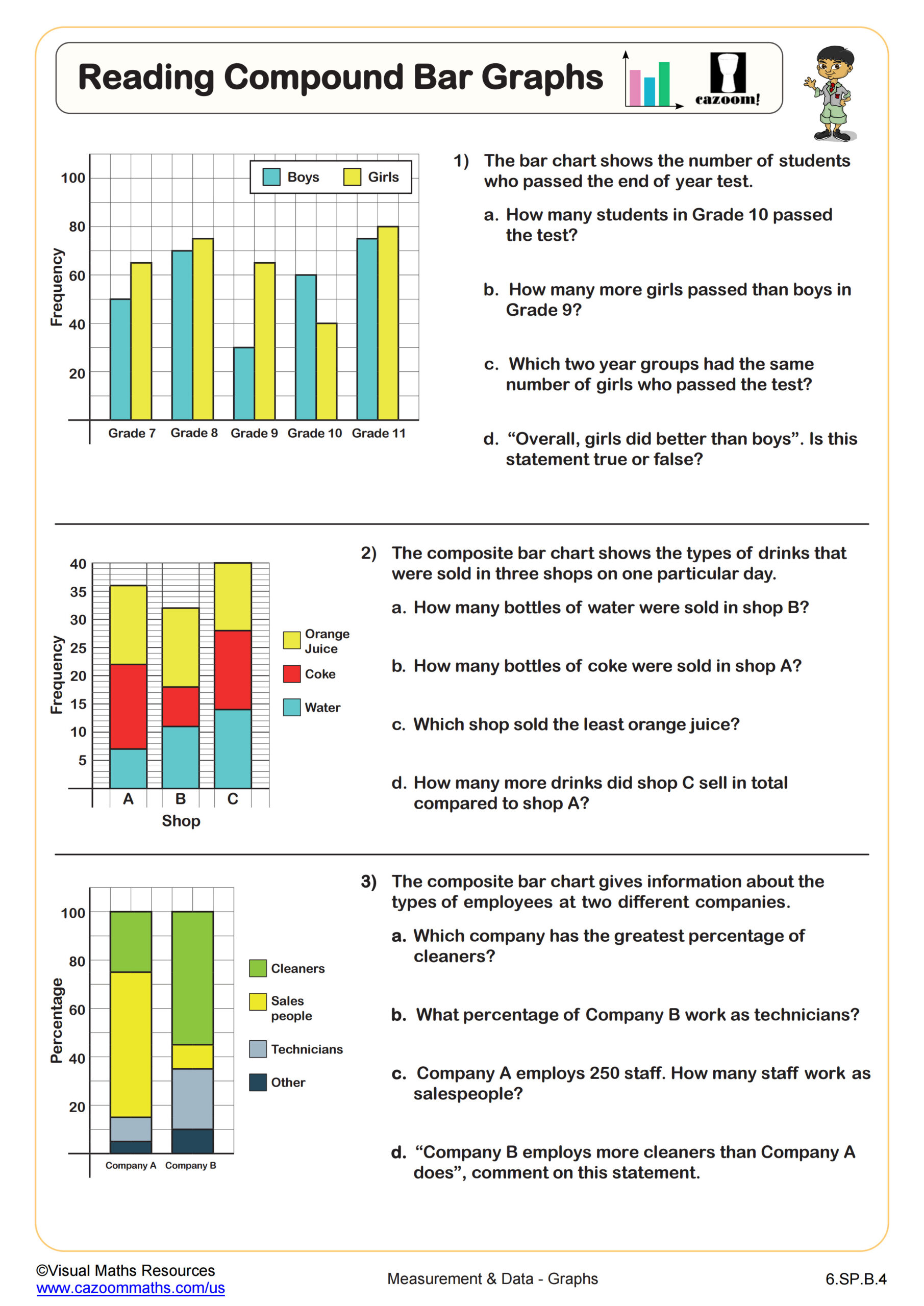
Reading Pie Charts (A)
Grades: 6th Grade
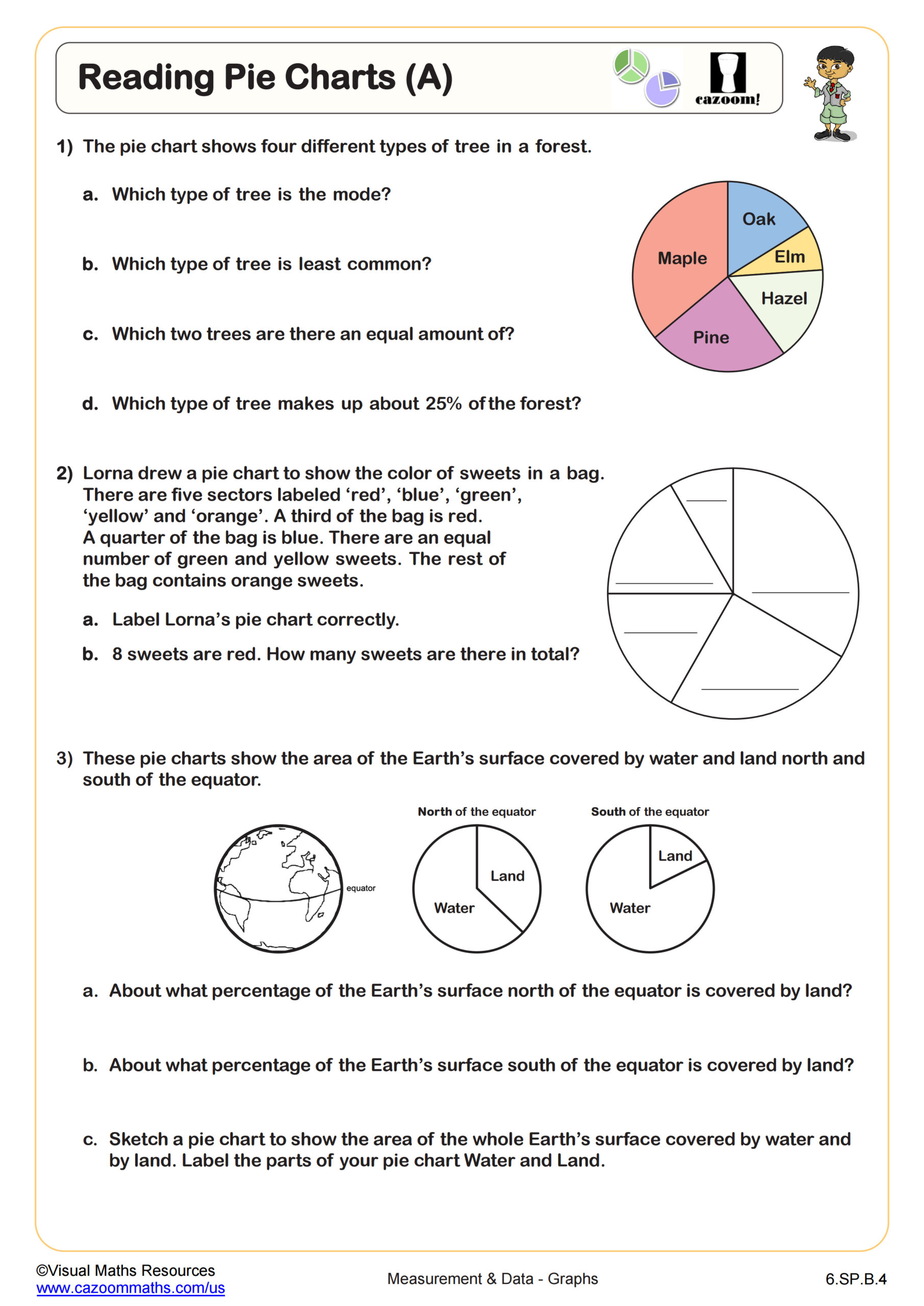
Reading Pie Charts (B)
Grades: 6th Grade

Criticising Graphs and Charts
Grades: 7th Grade, 8th Grade
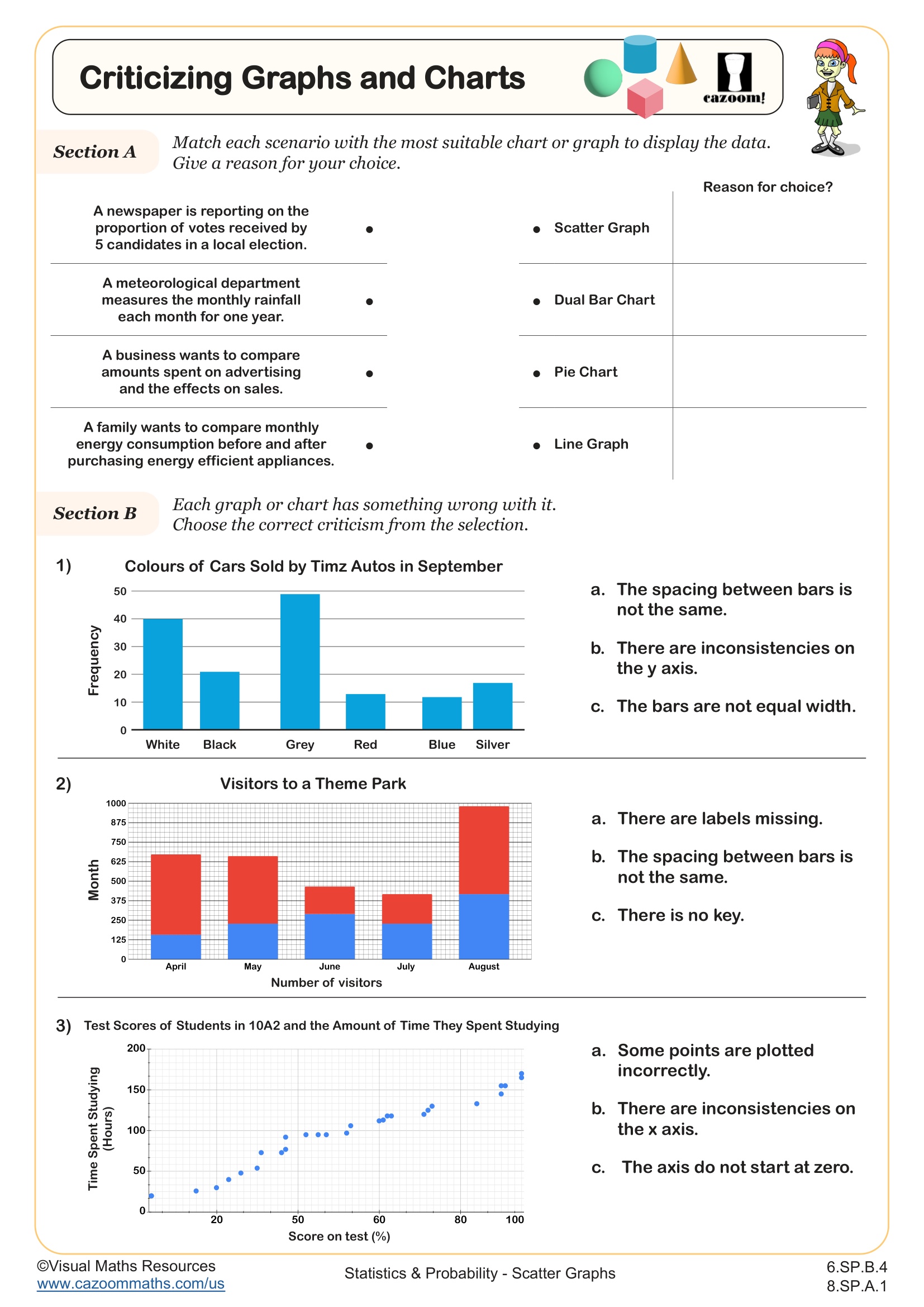
Correlation and Causation
Grades: 8th Grade, IM 1
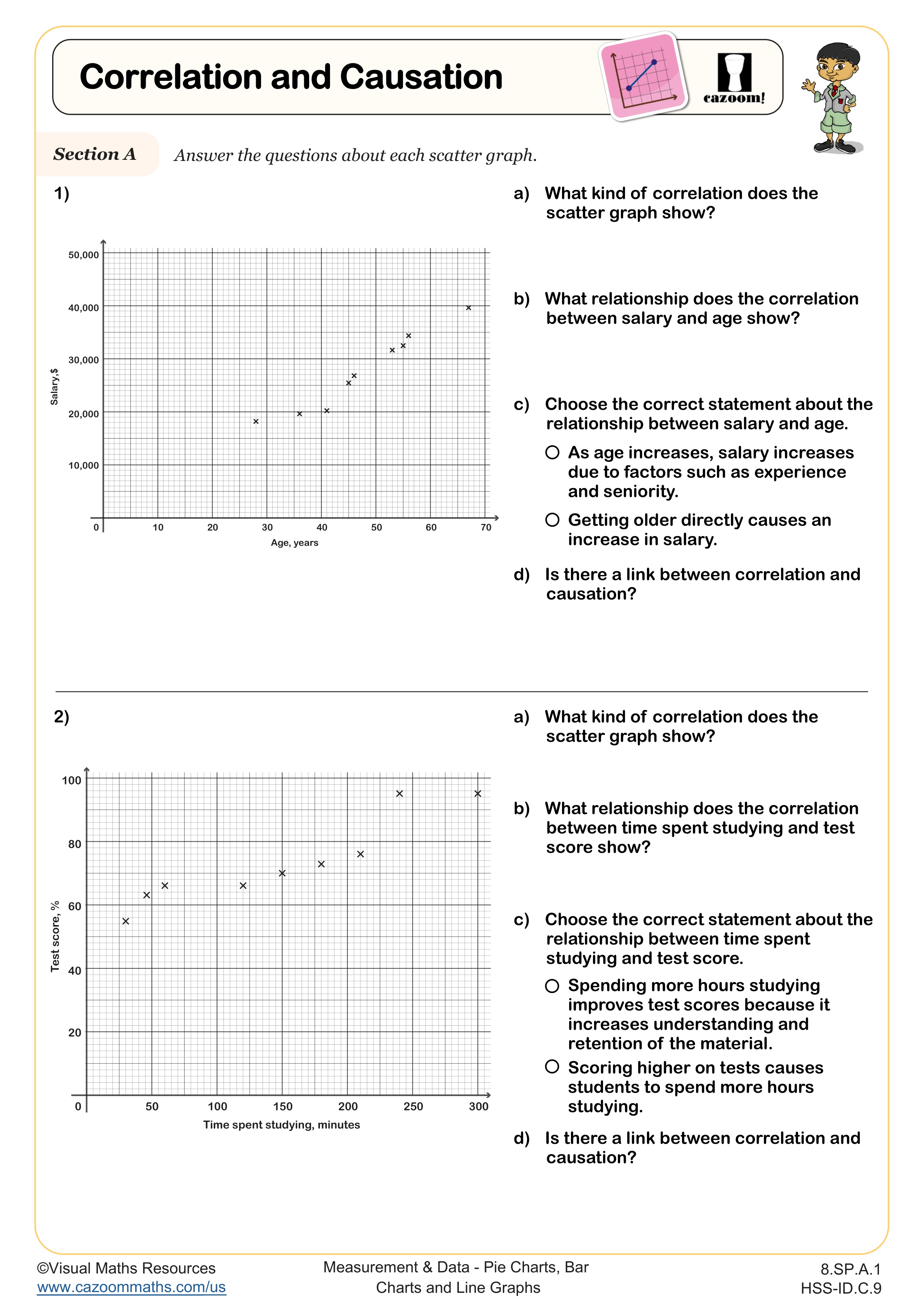
Producing Two Way Tables
Grades: 8th Grade
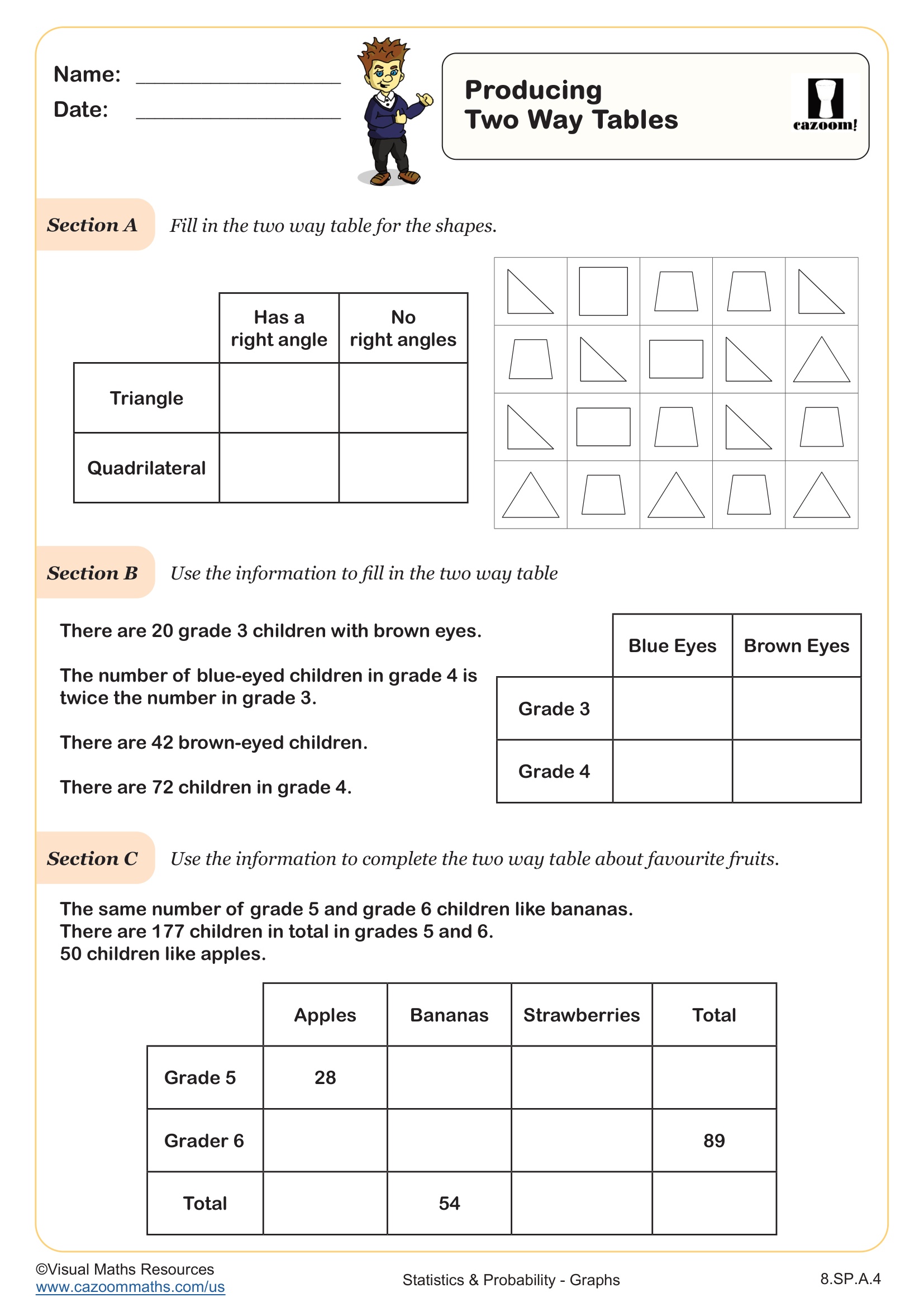
Reading from Two Way Tables
Grades: 8th Grade, IM 1
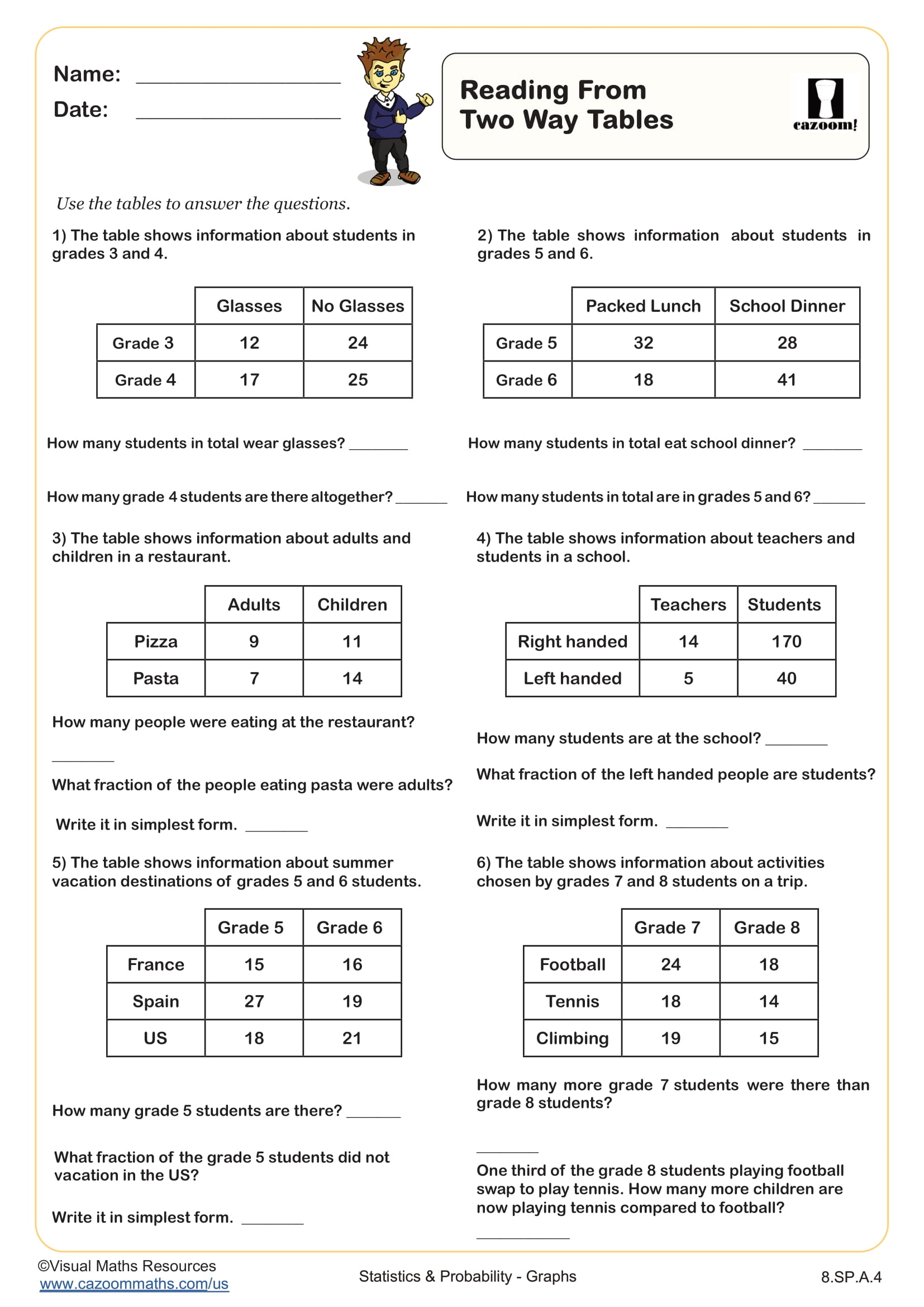
Choosing the Best Graphical Representation of Data
Grades: Algebra I
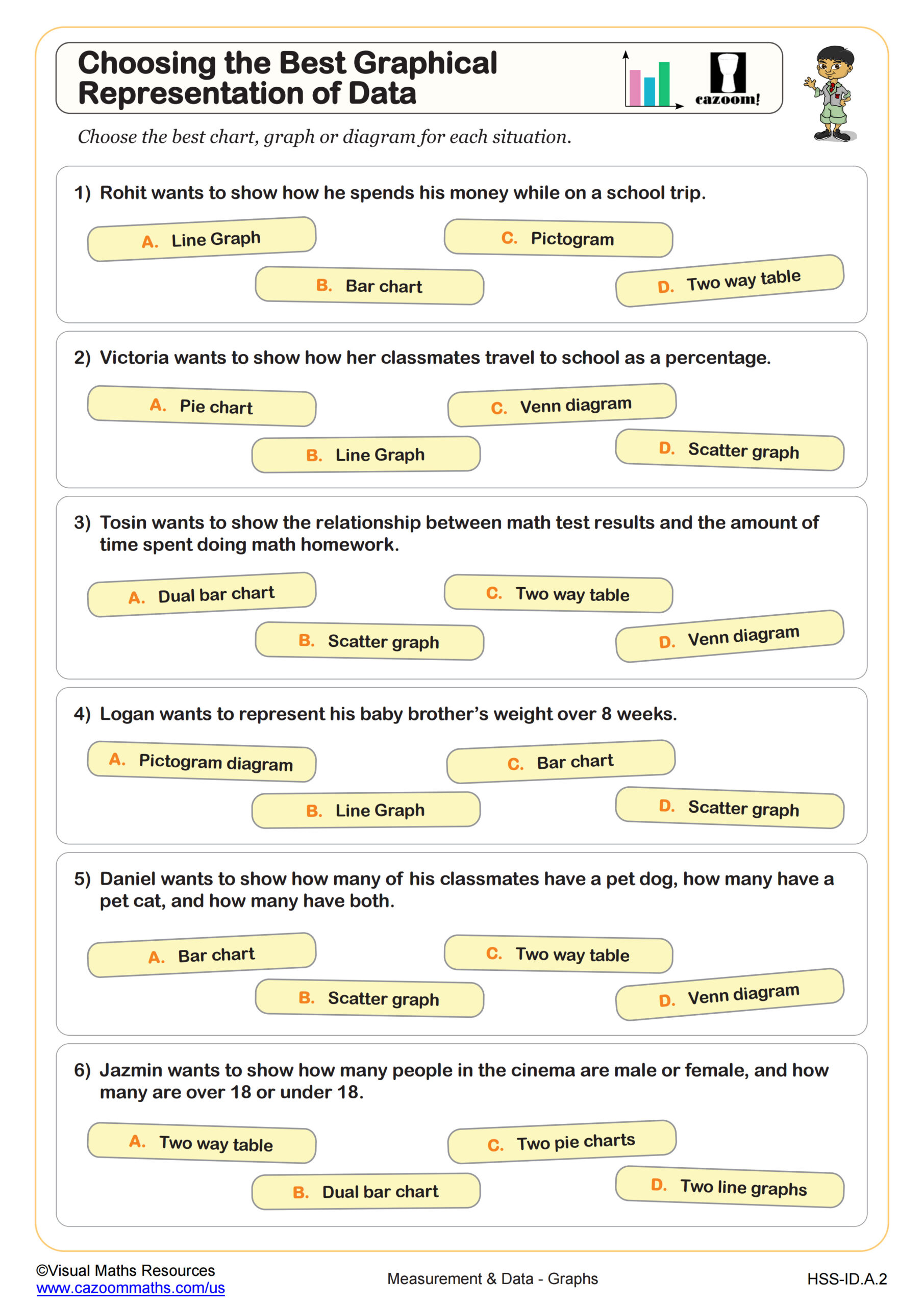
Line Graphs (A)
Grades: Geometry, IM 2
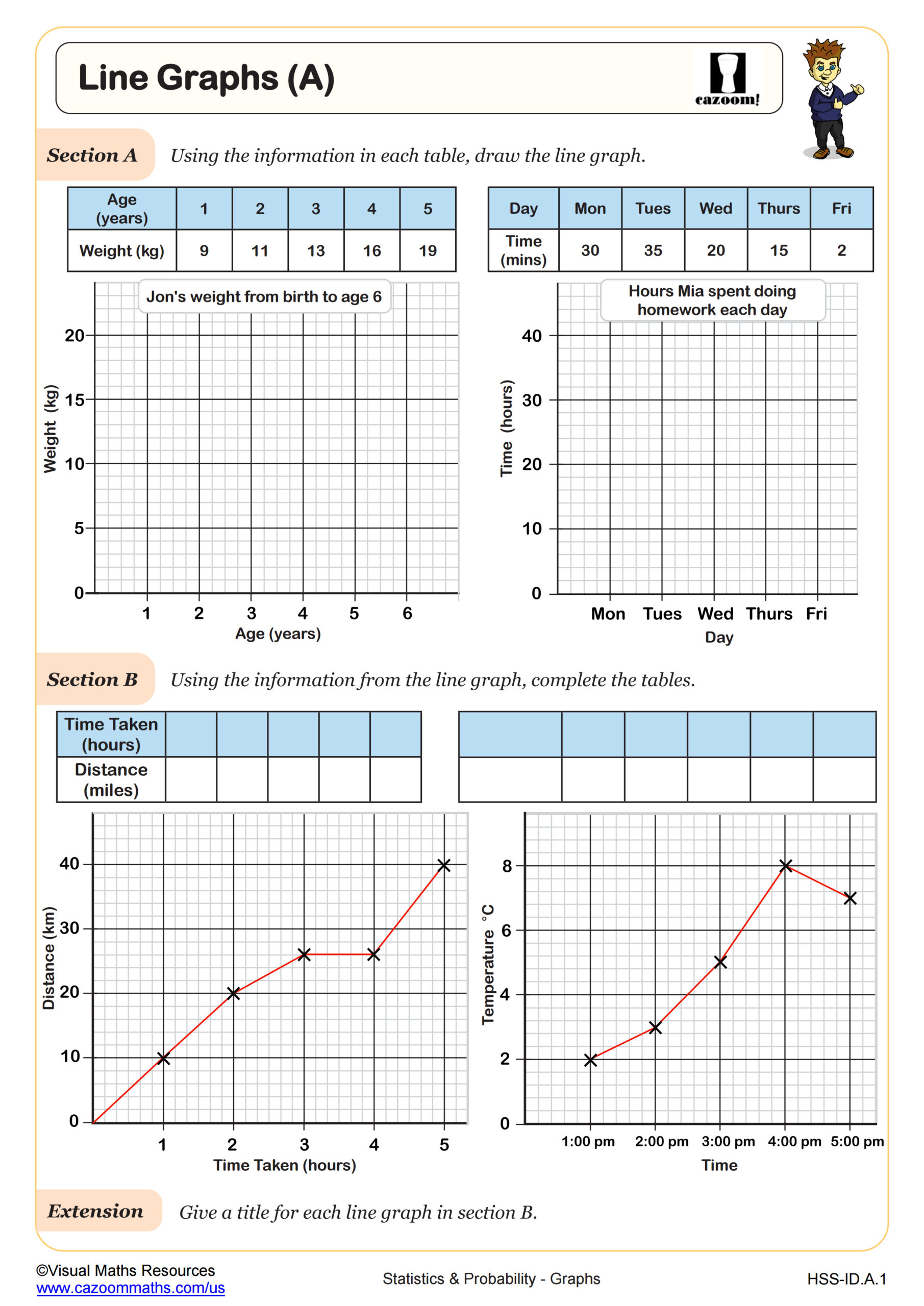
Line Graphs (B)
Grades: Geometry, IM 2
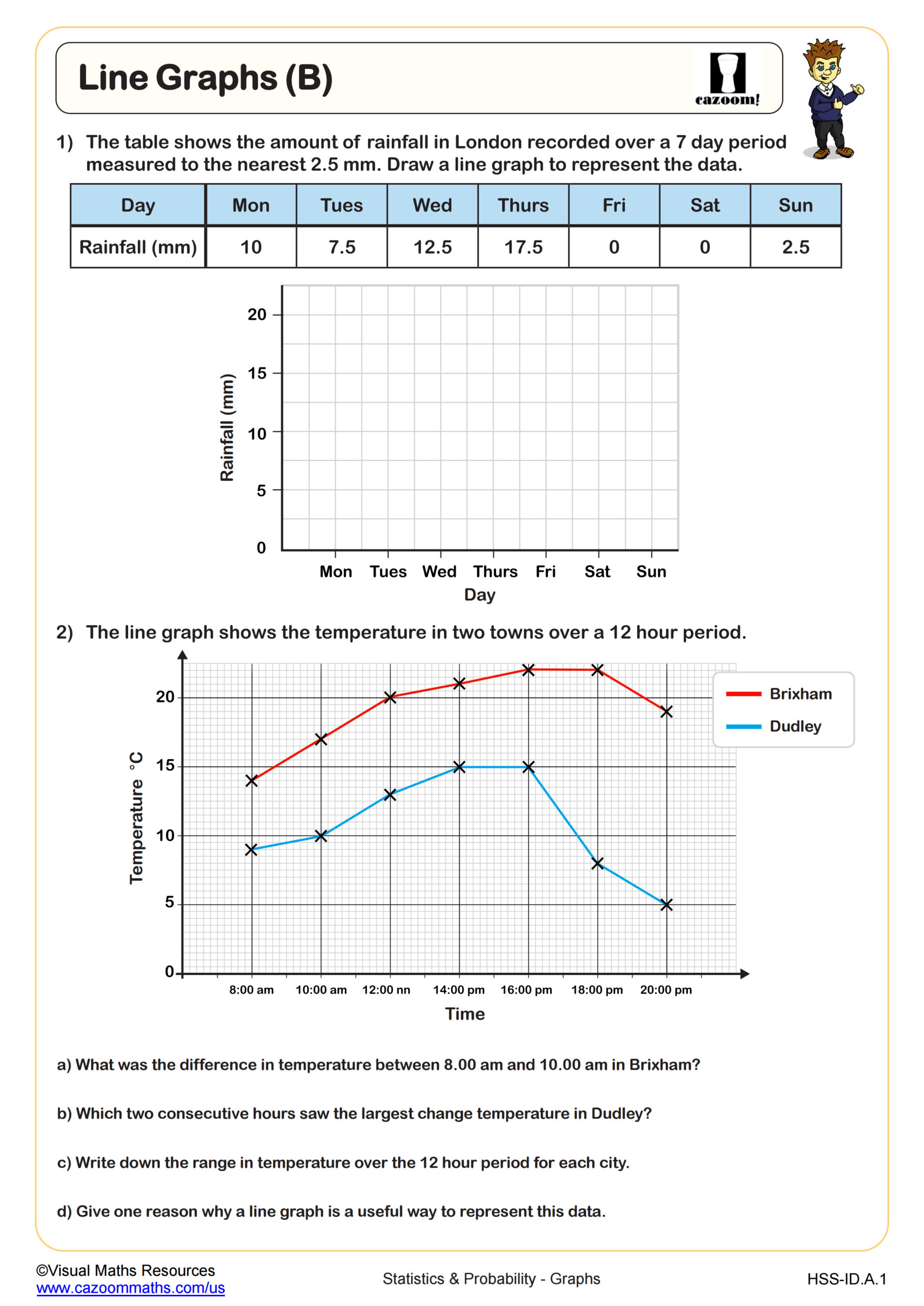
Printable PDF pie charts, bar charts, and line graph worksheets with answers
Download our printable PDF Pie Charts, Bar Charts, and Line Graph resources to give students the push they need when learning different concepts of statistics equations. Our math experts have specifically curated these resources in a way that your children can master the worksheet using simple sums with clear and easy-to-understand instructions. Hence, our statistics resources are great for building a sense of numbers, data, statistics and early problem-solving skills.
What are pie charts, bar charts, and line graphs?
Pie charts, Bar Charts, and Line Graphs are some of the basic skills of statistics. Bar charts use bars to compare quantities. On the other hand, Pie charts show parts of a whole as slices of a circle. Line graphs track changes over time using points connected by lines. Together, these graphs help students display, organize, and understand data clearly. They are foundational tools in statistics and are widely used across subjects and real-life applications.
Why learning graph skills is important?
Understanding how to read and create graphs is essential for solving problems, organizing data, and making comparisons. These worksheets teach students how to spot patterns, compare values, and interpret results. Topics included in our core statistics resources are: reading tally charts, reading pictographs, completing tables from pie charts, drawing bar graphs from frequency tables, choosing the best graphical representation of data, and much more. Learning how to use pie charts, bar graphs, and line graphs builds confidence in analyzing data and prepares students for more advanced topics in statistics and science.
Real-Life Uses of Graphs and Charts
Students will encounter graphs in many real-life settings. Weather charts, sports scores, spending trackers, and school reports all use visuals to show information clearly. Learning how to interpret these visuals helps students make sense of everyday data. These worksheets provide relatable examples to build graph-reading skills in real-world situations.